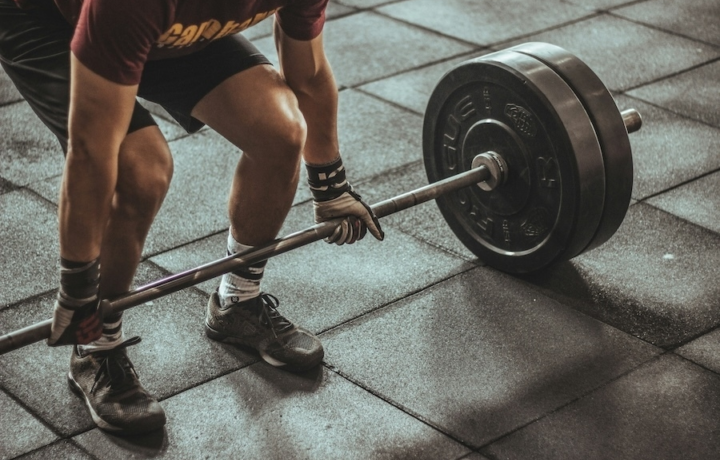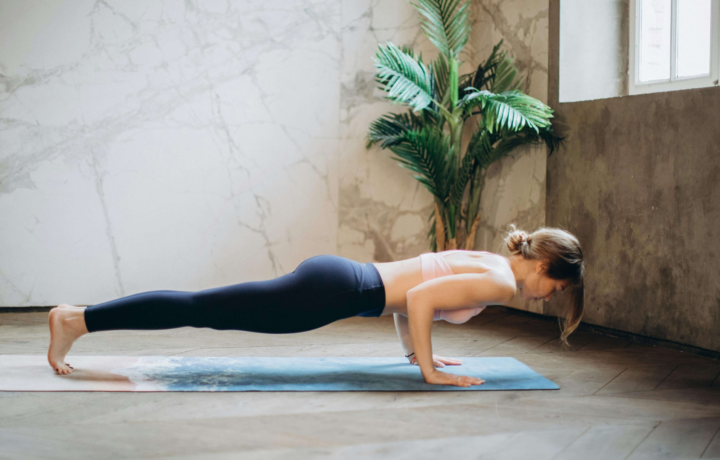Exercise
Bodyweight Single Leg Deadlift

Bodyweight Single Leg Deadlift
How to Perform
- Stand with your feet hip-width apart, weight evenly distributed, and maintain a tall posture with shoulders back and core engaged.
- Shift your weight onto your right foot, keeping a slight bend in the right knee while maintaining a neutral spine.
- Hinge forward at the hips while simultaneously extending your left leg behind you, keeping it in line with your torso as you exhale.
- Continue lowering your torso until it's nearly parallel to the floor, ensuring your back remains flat and your supporting knee slightly bent.
- Keep your arms hanging straight down or extend them forward for balance while maintaining shoulder retraction throughout the movement.
- Squeeze your glutes and hamstrings as you inhale and return to the starting position by driving through your standing heel.
- Maintain a controlled tempo throughout the exercise, focusing on hip hinge mechanics rather than rounding your back.
- Complete all repetitions on one leg before switching to the other side, ensuring equal work on both legs.
Important information
- Keep your hips square to the ground throughout the movement to prevent rotation and maintain proper form.
- If you're struggling with balance, position yourself near a wall or sturdy object for support, or gaze at a fixed point on the floor.
- Start with a smaller range of motion and gradually increase as your balance and strength improve.
- Engage your core continuously to protect your lower back and maintain stability during the exercise.

Bodyweight Single Leg Deadlift
Exercise Details
Primary Muscles
Muscle Groups
Mechanic
Risk Areas
Built for progress
Take the guesswork out of training
Create personalized AI-powered workout plans that evolve with you. Train smarter, track every rep and keep moving forward, one workout at a time.






The Bodyweight Single Leg Deadlift represents an exceptional intermediate-level movement that targets the posterior chain, with primary emphasis on the glutes and hamstrings. This versatile exercise bridges the gap between rehabilitation and high-performance training, making it valuable for both bodybuilding enthusiasts looking to sculpt balanced lower body aesthetics and athletes in recovery phases seeking to rebuild strength without excessive loading.
Unlike its weighted counterpart, this bodyweight variation allows practitioners to develop unilateral strength—addressing muscular imbalances that often go unnoticed in traditional bilateral exercises. The single-leg component introduces an inherent stability challenge that engages the core musculature while simultaneously training proprioception and balance, elements crucial for functional strength development.
Many fitness enthusiasts underestimate the strength-building potential of this movement simply because it doesn't involve external resistance. However, research suggests that the neuromuscular coordination required to maintain proper alignment throughout the exercise creates significant tension in the target muscles, particularly at the eccentric phase when the hip hinge is performed with control. This makes it particularly effective for developing strength foundations before progressing to loaded variations.
The beauty of this exercise lies in its accessibility and scalability. For those with advanced strength profiles, it serves as an excellent warm-up or recovery day option that maintains movement patterns without overtaxing the central nervous system. For intermediate trainees, it offers just enough challenge to stimulate growth while refining movement mechanics and intramuscular coordination.
From a physiological perspective, the single-leg position creates greater recruitment of stabilizing muscles throughout the hip complex, enhancing not just primary movers but also the supporting cast of muscles that contribute to lower body power. This comprehensive approach to posterior chain development makes it particularly valuable for those looking to build functional strength that transfers to athletic performance rather than just aesthetic muscle development.
FAQ - Bodyweight Single Leg Deadlift
The Bodyweight Single Leg Deadlift primarily targets your posterior chain, with emphasis on the glutes and hamstrings. It also engages your core muscles and smaller stabilizers throughout the hip complex while challenging your balance and proprioception.
To make it easier, hold onto a wall or sturdy object for balance, reduce your range of motion, or keep your non-working foot closer to the ground. To increase difficulty, extend your arms overhead, slow down the eccentric (lowering) phase, or hold a brief pause at the bottom position.
The most common mistakes include rounding your lower back, rotating your hips instead of keeping them square, rushing through the movement, and not hinging properly at the hips. Focus on maintaining a neutral spine, moving with control, and keeping your standing knee slightly soft rather than locked.
For optimal results, include the Bodyweight Single Leg Deadlift 1-3 times weekly, performing 2-3 sets of 8-12 repetitions per leg. This frequency provides enough stimulus for strength development while allowing adequate recovery, especially if you're also doing other posterior chain exercises.
Yes, when performed correctly, this exercise can help alleviate certain types of back pain by strengthening the posterior chain muscles that support proper posture. The focus on hip hinging rather than spine flexion teaches proper movement patterns that transfer to daily activities, potentially reducing back strain.








